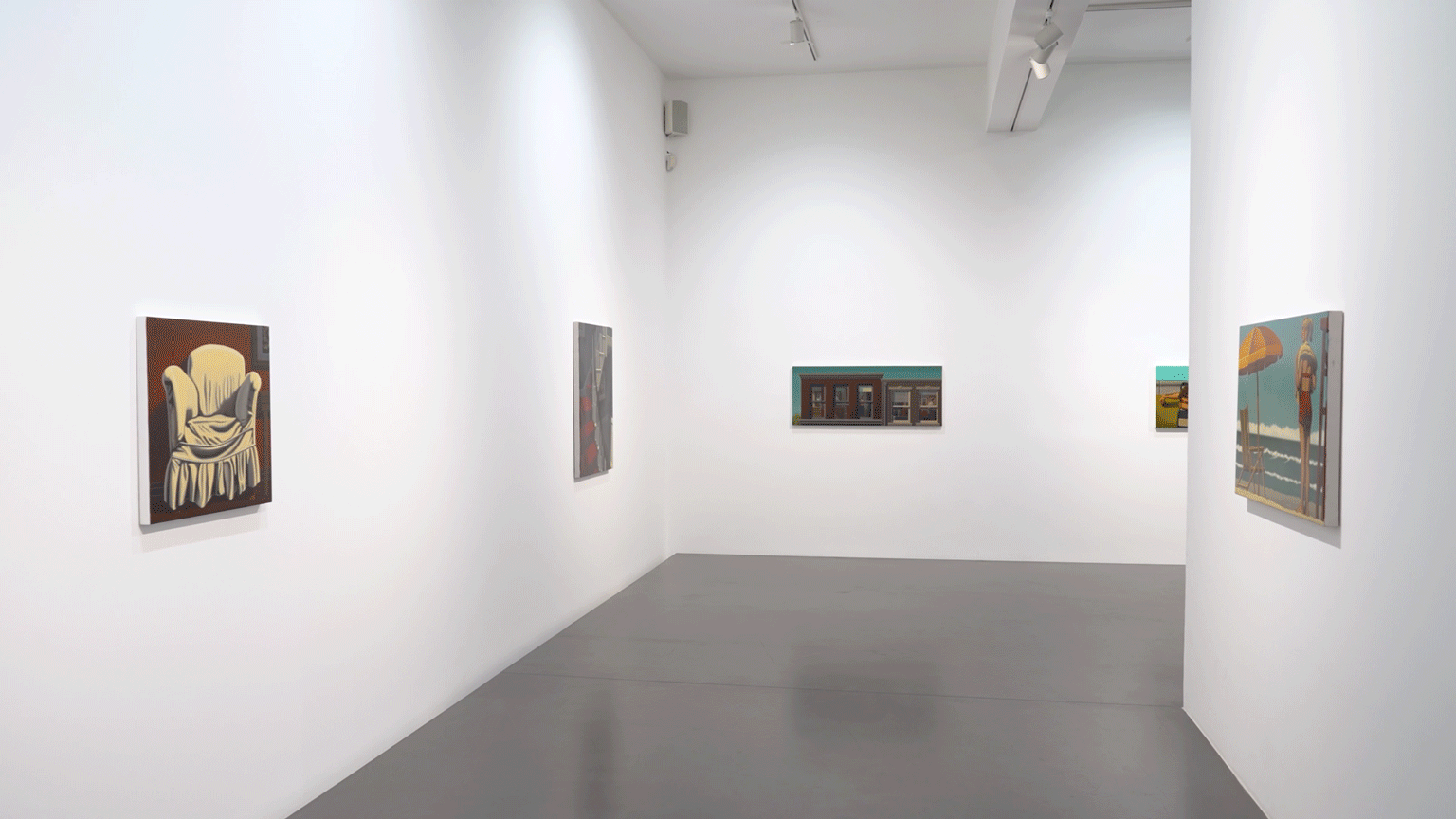In Light, KENTON NELSON presents a series of new oil paintings. Defined by stylized clarity and an abundance of motifs, they tie in with autobiographical impressions while also digging deep into the collective visual memory of American pop culture. The paintings stand out for their warming nostalgia, peculiar air of anxiety, and mysterious gazes.
At first blush, NELSON’s paintings look like snapshots from an idyllic America of decades ago – a place filled with calm, order, and light. They recall the visual language of advertisements from the 1930s through 1950s and pick up on stylistic elements of New Deal-era public murals. During the Great Depression of the 1930s, government programs like the Federal Art Project (FAP) hired artists to embellish public spaces such as post offices with wall paintings. Such settings of daily life were especially suitable for accessible representations of American values and hopeful prospects of the future. The so-called “American Scene Style” was characteristic of the works produced by these programs: idealized narrative depictions of everyday life in the fields, workshops, and streets. Designed to foster societal initiative and participation, they foregrounded community membership, regional identity, and aspects of universal approachability.
The figures NELSON depicts – cropped and without individual traits – are similarly not portraits but allegories of more general states of mind. They speak of recollection, yearning, and ideals, but also of the tension between those ideals and the individual. Despite the resulting superficial suggestion of amenability, the compositions of the panels ultimately refuse any intimacy. In the controlled execution of their smooth surfaces, which evince no traces of brushwork, and their bold colors, there is something almost graphical about NELSON’s pictures, a reminiscence of his professional career, which he began as a graphic artist and illustrator. Several of his works appeared on the cover of The New Yorker; like his paintings, they bespeak his penchant for narrative condensation and the visual language of American everyday aesthetics – formally balanced down to the smallest detail.
Light, the exhibition’s title, is not only a reference to the physical presence of light, which floods rooms, casts shadows, and accentuates surfaces. The Californian sunlight that is typical of NELSON’s oeuvre wants to convey ease, clarity, and the promise of a better tomorrow. But the lightness comes with shadows. The formal order veils loss, stagnation, melancholy. Calamity looms in the perfection of the composition, in the excessively aestheticized surface and an indeterminate subtle absence. NELSON’s central tool in his exploration of these in- between spaces is the gaze. It glimpses inside through re flective windows, peers out through narrow keyholes, roams interiors that reveal a great deal and yet also obscure, espies pictures within pictures, sections of landscapes, and an unde fined distance – even vistas of blazing sunshine. As though NELSON were encouraging the viewer to fly toward the light like a moth so as to behold the darkness that can lurk behind it.
In this way, his works elude a reading that seeks to extract an unequivocal message. The quotidian sceneries – streetscapes, interiors, gestures and postures, all of them, it would seem, drawn directly from observation – appear in radical isolation, translated into pictorial spaces that exist outside time. In the end, more is concealed than shown. This ambivalence pervades NELSON’s practice. No longer striving to uncover secrets, it acknowledges their presence. As the artist has confirmed in interviews on many occasions over the years, his painting is profoundly autobiographical, yet it strikes the eye as universal. His works chart spaces in which time seems to stand still—fragile parallel worlds in which the past perpetually wrestles with the present.




